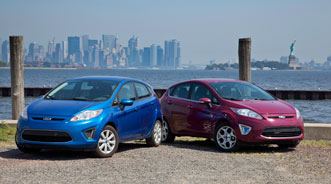Rasmussen: American-Made Vehicles Gain Consumer Appeal

By subscribing, you agree to receive communications from Auto Remarketing and our partners in accordance with our Privacy Policy. We may share your information with select partners and sponsors who may contact you about their products and services. You may unsubscribe at any time.
ASBURY PARK, N.J. –
A recent Rasmussen Reports survey of U.S. adults sought to determine if an American-built vehicle is the top priority for potential buyers.
While buying an American-made unit still stands as a high priority, apparently survey participants said finding the best deal tops all factors.
Rasmussen found that 44 percent of survey participants said they look for the best possible deal regardless of where it’s manufactured. A total of 41 percent indicated that finding an American-made vehicle was most important, while just 12 percent preferred foreign-built units.
The results of this November survey differs from what Rasmussen found in June 2008.
At that point, the firm reported that 51 percent of survey participants said finding the best deal was their top priority. Just 32 percent of those polled placed more importance on “buying American.”
Delving deeper into the recent data, Rasmussen also learned that Americans are divided on what exactly American-made means.
Subscribe to Auto Remarketing to stay informed and stay ahead.
By subscribing, you agree to receive communications from Auto Remarketing and our partners in accordance with our Privacy Policy. We may share your information with select partners and sponsors who may contact you about their products and services. You may unsubscribe at any time.
The survey revealed that 41 percent of respondents believe buying a foreign brand that is built in the U.S. is the same as buying American. Officials noted 42 percent of those surveyed do not buy that principle, while another 17 percent are not sure.
Still, Rasmussen discovered that a majority of adults — 59 percent to be exact — consider the Big 3 of Ford, General Motors and Chrysler to be the only American automakers. The firm said 29 percent disagree, while 12 percent are undecided.
The November survey also indicated 54 percent of Americans stated they are less likely to buy a GM vehicle because the federal government is the automaker’s majority owner.
Looking even deeper, report officials contend that 53 percent of Americans still think the federal government bailout of GM and Chrysler was a bad idea.
“Most adults were opposed to the taxpayer bailout of the two auto companies right from the start,” Rasmussen asserted.
The firm explained its latest survey polled 1,000 adults nationwide and was conducted on Nov. 10-11. Officials believe the margin of sampling error is 3 percentage points with a 95 percent level of confidence.


